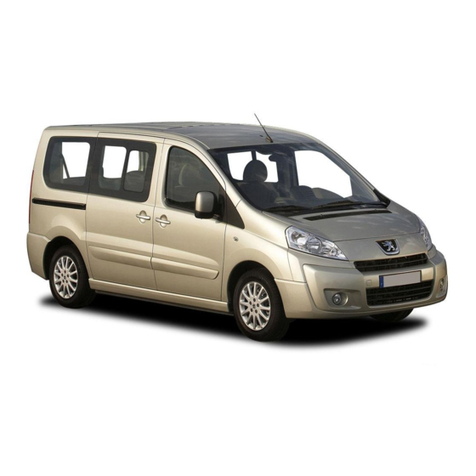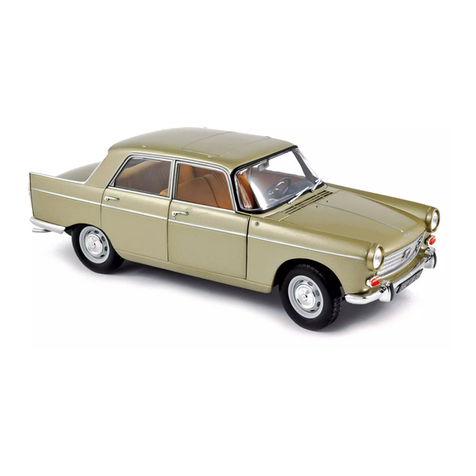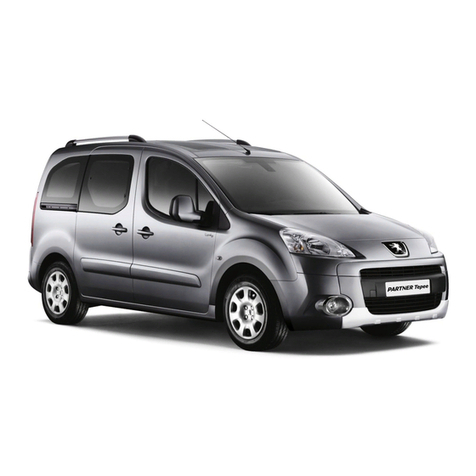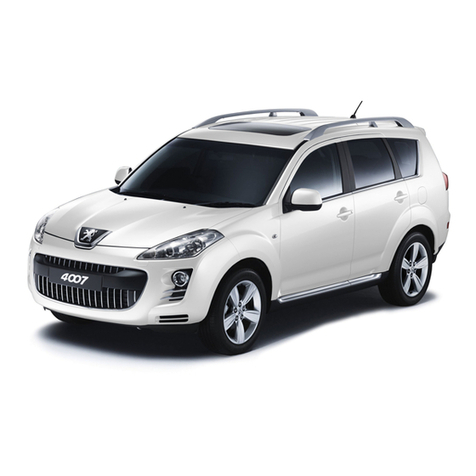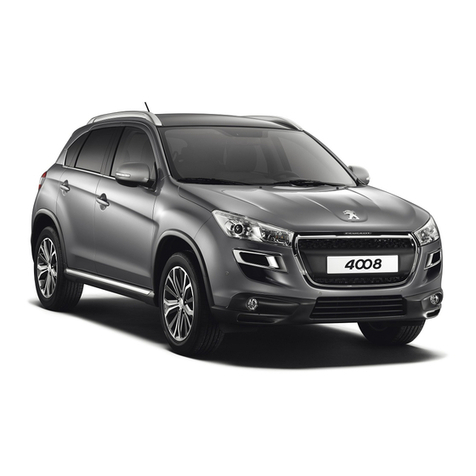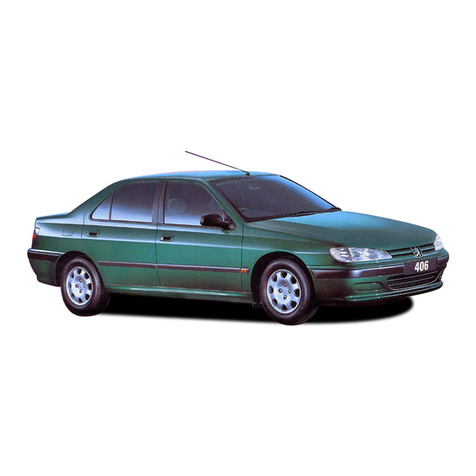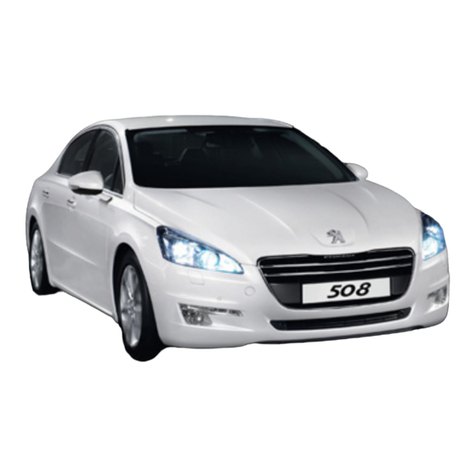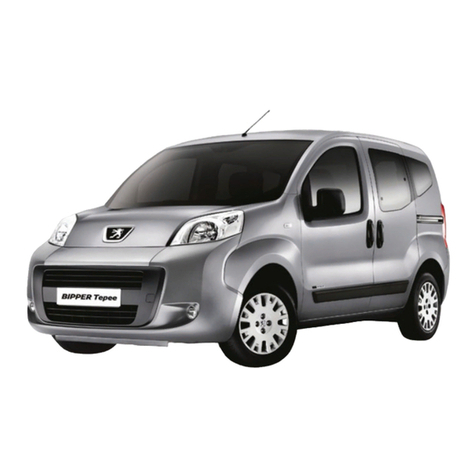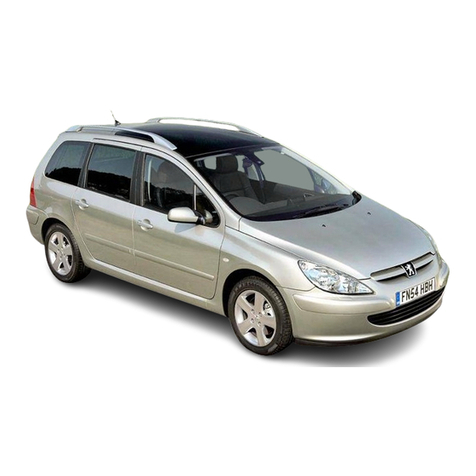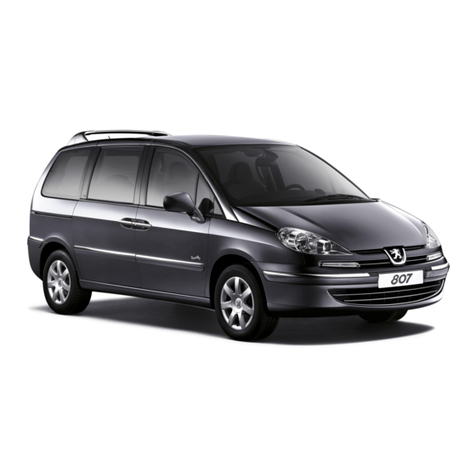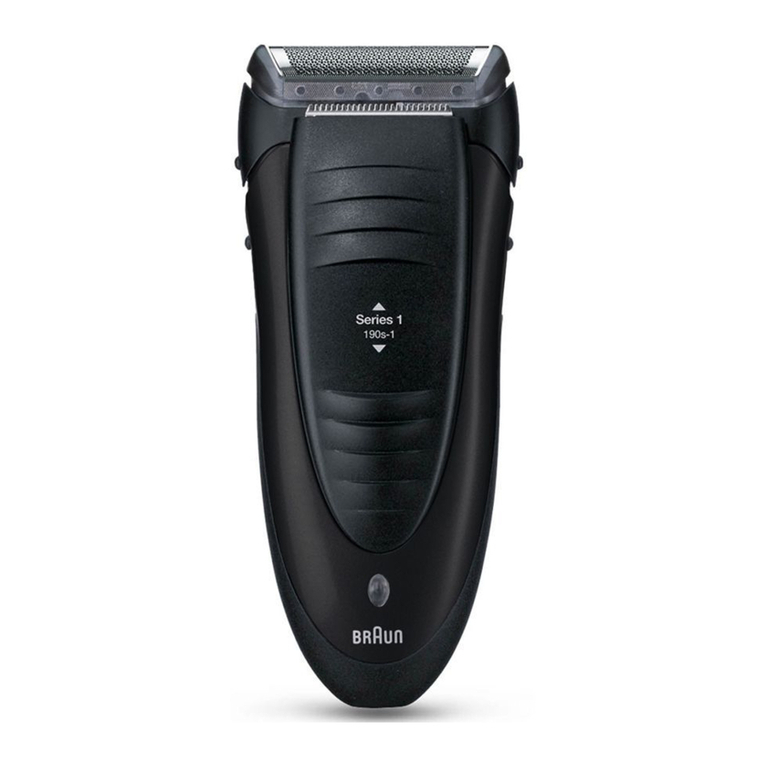retaining the coolant for íurther use if antifreeze has been
added.
1 Remove the spaÍk plug leads, spark plugs and
dicf rihr rfnr nrn
2 Remove the top radiator hose. rocker lubrication pipe
and the Ían belt.
3 Disconnect from the cylinder head the lower
radiatoÍ hose and the heater connection.
4 Remove the petrol Íeed and the distributor vacuum
lines, disconnect the accelerator and choke controls
at the carburetter and remove the air cleaner and the
rocKer cover.
5 Remove the carburetter and inlet pipe with the
difÍuser.
6 Uníasten the exhaust flange, the front mufÍler
attachment collar and the sliding lug of the generatoÍ
to cylinder head.
7 Disconnect the electrical leads to the magnetic Ían.
8 Refer to FIG 1:6 and remove the cylinder -head
attaching bolts Nos. 8 and 12.
9 Fit cylinder head guides, 8.01 15, into the holes
vacated by bolts I and 12 and screw in completely.
The guides have a knurled end fitting with a leÍthand
thread which should unscrew as soon as the guide
comes level with the top of the rocker gear bearing.
10 Remove the remaining cylinder head bolts and rocker
attaching nuts and withdraw the rocker assembly and
pushrods, cylinder head and gasket.
11 Lock the cylinder liners by means of the locking
screws 8.01 04D as shown in FIG 1 :7. lf the soecial
screws are not available a large washer may be used
in conjunction with a spacer and a cylinder head bolt.
BeÍore replacing the cylinder head careÍully clean the
joint faces on the cylinder block and the cylinder head.
Ensure that both faces are true. The maximum out of true
tolerance is .05mm. Should this tolerance be exceeded
the cylinder head joint face may be surfaced providing the
minimum overall depth of the cylinder head is not
reduced below 91 .5mm;|.15. The cylinder block.loint
face should never be machined,
The cylinder head gasket is made oÍ an asbestos sheet
set between two sheets oí galvanized iron. As from
September 1960, the setling width at both ends oÍ the
.ioint has been reduced from 3 to 2mm. In addition, the
setting at the rear end has been interrupted, in order to
improve the elasticity of the gasket. The corners oÍ the
gasket are cut in order to permit measuring with a set oÍ
shims the thickness of the gasket under load. Thickness
of the gasket under '1 500 kg load, equal to normal
torque loading oí the cylinder head, should be 1.5mm
+.1.
BeÍore placing the gasket on the cylinder block, coat
the gasket on both sides with light grease or engine oil.
Replace the cylinder head in the following manneÍ:
1 Remove the cylinder liner locking screws and place the
cylinder head gasket in position on the cylinder block.
The cylinder head gasket should be fitted wirh the
marking DESSUS Íacing upwards. Make sure that
the crankshaft is not rotated while the liners are
not locked in position with the retaining screws.
2 Place the cylinder head in position on the cylinder
block (see FIG 1 :8) and Íit Nos. 3 and 7 retaining bolts
(see FIG 1:6). Assemble the pushrods and rocker
assembly and fit the remaining cylinder head bolts and
P404
)
"r/
l(
I
FIG 1 :4 Showing the position of the engine mounts
and the angular disposition oÍ the engine in the car
FIG 1 :5 Method of slinging the engine
@o @ e
FIG 1 :6 Cylinder head bolt tightening sequence. Note
that the cylinders are numbered Írom the rear of the
engrne
rocker Íetaining nuts. Remove the guide pins and fit
the bolts 8 and 12.
3 Tighten the cylinder head nuts and bolts in two stages
in the correct sequence (see FIG 1 :6), to the Íollowrng
toroue:
First tightening 29 lb ft
Final tightening 51 lb ft
4 Install all components and connections by reversing
the removal sequence.
11
TIGHTENING SEQUENCE
í+:''o+i

